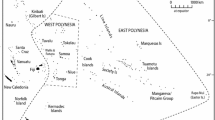Conclusion
De Vries' mutation theory has not stood the test of time. The supposed mutations of Oenothera were in reality complex recombination phenomena, ultimately explicable in Mendelian terms, while instances of large-scale mutations were found wanting in other species. By 1915 the mutation theory had begun to lose its grip on the biological community; by de Vries' death in 1935 it was almost completely abandoned. Yet, as we have seen, during the first decade of the present century it achieved an enormous popularity. As this paper has tried to suggest, one of the principal reasons for this was that de Vries' theory served as a banner around which a whole crowd of disaffected Darwinians or anti-Darwinians could rally. However, not all of those who favored de Vries did so for quite the same reasons. Underlying the multitude of views ran several common threads: a dissatisfaction with current Darwinian theory born out of misunderstanding natural selection, a general misunderstanding of the nature of species, and a prejudice against speculative, nontestable theories in biology.
Supporters of de Vries were not the only opponents of Darwinism, nor was the mutation theory the only alternative to natural selection. In the early twentieth century a number of theories had been proposed to explain away the problems which Darwin had left unsolved. There was the idea of orthogenesis, championed by the American paleontologists Cope, Osborn and others; organic selection (or orthoplasy) was championed by M. M. Baldwin and C. Lloyd Morgan; there were the concepts of convergent evolution proposed by Hermann Friedmann, the theory of physiological selection by John George Romanes, and the concepts of reproductive divergence by H. M. Vernon. Virtually none of these men either accepted or were strong supporters of the de Vriesian theory, for each had his own particular ‘ism” to advocate as the major factor in evolution. The existence of a large number of such theories, each purporting to be the explanation, was characteristic of evolutionary theory at the turn of the century. It is to a large extent the emphasis on such fragmentary concepts that retarded development of the comprehensive theory of evolution which emerged in the 1920's and 1930's. For the historian, however, a study of these alternative theories is instructive in trying to understand the inherent difficulties which Dawwinian theory posed to biologists at the time. De Vries' mutation theory serves historically as a mirror to reflect the critical mood of a generation hostile to the theory of natural selection.
It has often been claimed that it was impossible to understand the mechanism of natural selection until it could be placed in genetic and mathematical terms. It is certainly true that great strides have been made in population genetics and the treatment of evolutionary concepts with mathematical tools in the last forty years. But the very people who developed the genetical and mathematical approach to evolution were already convinced of the essential correctness of Darwinian theory before they started. Advances in an understanding of Mendelian heredity aided greatly in solving one important issue for evolutionists: the origin of variations. And the rigor with which selection acted could best be studied by observing changes in gene frequencies (calculated mathematically) over a number of generations. But as this paper has shown, two of the basic problems which biologists faced in evaluating Darwinian theory at the turn of the century-the nature of species, and the criteria of what constituted an acceptable explanation in biological science-could not be answered directly by mathematics. What mathematical and genetical theory did do was to help convince the skeptics of the validity of the Darwinian proposition.
The change in explanatory criteria which many hailed as de Vries' most important contribution to evolutionary theory seems to have been part of a general emergence of twentieth-century biology from the domination of theorizers in the nineteenth. It also marked the emergence of America from the domination of biological, and particularly evolutionary, influence of Europeans. The change occurred in three areas: in the kinds of questions asked: testable versus non-testable; in the kind of data sought: quantitative versus qualitative; and in the kinds of theories proposed: analytical and reductive—the attempt to see complex processes in terms of simpler components-as opposed to synthetic and speculative. Although ultimately wrong in his idea, de Vries and his theories rode high on the wave of “experimentalism” which was the harbinger of a new era in evolutionary theory.
Similar content being viewed by others
Author information
Authors and Affiliations
Additional information
Preparation of this paper has been aided by a grant from National Science Foundation (GS 1832).
Rights and permissions
About this article
Cite this article
Allen, G.E. Hugo de Vries and the reception of the “mutation theory”. J Hist Biol 2, 55–87 (1969). https://doi.org/10.1007/BF00137268
Issue Date:
DOI: https://doi.org/10.1007/BF00137268




